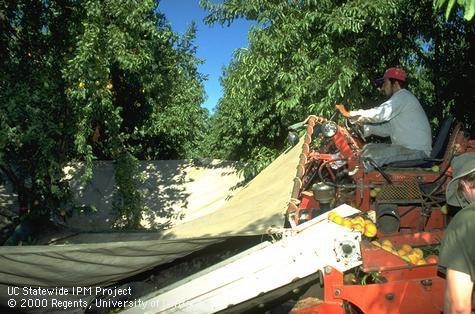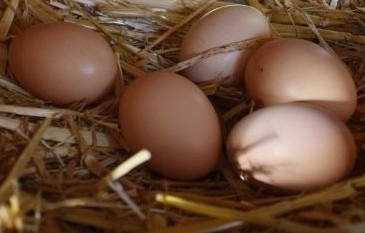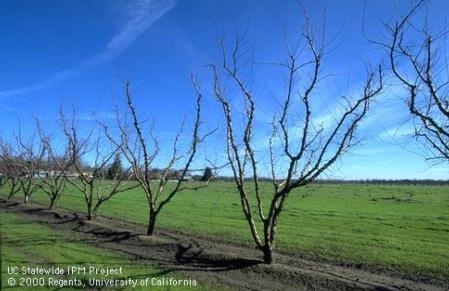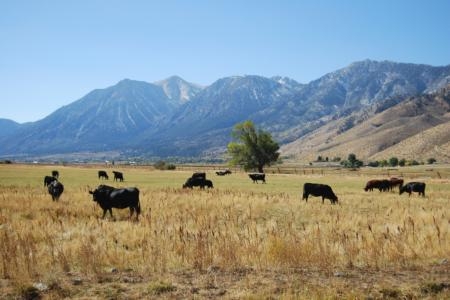Posts Tagged: Roger Duncan
It's raining in California, but drought concerns haven't been quenched
A storm is dropping some much-needed moisture in California today, but the drought drags on. Using UC sources, the media has been reporting on the effect of a prolonged rainless period this winter and well-below-average rainfall the last three years.
A story in the Los Angeles Times this week opened with the concerns of cattle ranchers. Without winter rain rangeland grass doesn't grow. Ranchers must decide whether to buy expensive feed or cull their herds to weather the drought.
"Their struggle is a bellwether for California's $45 billion agriculture sector," wrote reporter David Pierson. The repercussions will be felt beyond the state's borders. "The Golden State produces nearly half of all U.S.-grown fruits, nuts and vegetables and is the nation's leading dairy and wine producer."
Pierson quoted Doug Parker, director of the UC California Institute for Water Resources, in his article.
"The agriculture industry is definitely hit the hardest by drought," Parker said. "In California, agriculture uses 80 percent of water in the state. It's a major input for their business and hits their finances and employment directly."
The San Luis Obispo Tribune reported on drought hardships for SLO County fruit and vegetable farmers. Growers are facing increasing irrigation costs and taking steps to reduce salt buildup in the soil.
"The drought forces growers to prioritize crop cycles,” said Mary Bianchi, UC Cooperative Extension adviser. “What do you plant, and what do you leave fallow?”
In Stanislaus County, ranchers are expressing concerns about a trend among farmers toward planting almonds, reported the The Modesto Bee. Ranchers are worried the spread of almonds, walnuts an other high-value crops could strain their limited groundwater, drive up land prices and intrude on their way of life.
“It's not hard to understand why (farmers are planting more almonds),” said Roger Duncan, UCCE advisor. “It's very profitable.”
It was Duncan who provided the rough figures on almond profitability during the first day of the ninth annual summit of the California rangeland Conservation Coalition recently, wrote Bee reporter John Holland. Duncan said the net is even better for walnuts, which are not as extensive but still have had major growth in acreage. He also said the nut boom could be limited by a shortage of water and land.
The Drovers Cattle Network reported that cattle ranchers are seeking strategies for surviving the drought.
According to the article, rancher Billy McDonald's wife, Aileen, said she learned from UC Cooperative Extension farm advisor Glenn Nader that "you need to set a date, like if it doesn't rain by a certain date, to start culling. That's really important."
Also as part of the story, Roger Ingram, UCCE advisor in Placer and Nevada counties, advised ranchers to develop a drought plan.
Ingram warned against overgrazing and emphasized the importance of leaving enough residual dry matter in the ground to enhance seed germination and minimize soil erosion. With more bare ground, water would run off instead of soaking in, he said, and there would be less organic matter to feed soil microbes, resulting in fields being overrun by undesirable plants such as medusahead and yellow starthistle.
"Your grazing strategy should be take half, leave half," he said.
For those who are on irrigated pasture with limited water supply, UCCE advisor Larry Forero said fields are the driest in the summer but can get by with less water in the fall, so irrigate as close to evapotranspiration as possible and then stop irrigating. He also advised leaving four to five inches of stubble to facilitate pasture growth in the fall, should it rain or irrigation water become available.
California agriculture is hanging on during high heat
With the Central Valley locked in a heat wave, farmers are taking measures to keep farmworkers, farm animals and crops safe, reported the Modesto Bee.
Cows are being kept in the shade and cooled with fans, misters and plenty of drinking water. Chickens are kept in air-conditioned barns. California Division of Occupational Safety and Health requires farmers to provide workers water, shaded rest areas and emergency response plans.
UC Cooperative Extension offers extensive information on heat illness prevention online.
For the Modesto Bee story, reporter John Holland spoke to Roger Duncan, UCCE advisor in Stanislaus County, about the fate of tree crops in high heat.
The area's canning peach crop hasn't developed to the stage where hot weather causes a problem, Duncan said. Damage can occur when the fruit starts to ripen, which is still about 10 days away for early varieties.

The cling peach harvest is still a few weeks away.
Media gets UC input for stories on unconventional farming
Reporters sought UC Cooperative Extension expertise for recent articles about unusual farming efforts in two parts of California.
Fresno Bee reporter Robert Rodriguez covered the story of sisters in their early 20s who have settled on their dad's Laton alfalfa farm after he suffered complications from a black widow bite. The young women purchased chickens on a whim and began producing specialty eggs under the brand name "Just Got Laid."
Rodriguez spoke to Shermain Hardesty, UCCE specialist in the Department of Agriculture and Resource Economics at UC Davis, about trends in cottage farming.
"The timing is right for operators who can make a connection with consumers," Hardesty said. "People will support that."
Sacramento Bee reporter Edward Ortiz wrote about a return to dry-land farming in the Central Valley, with examples of farmers opting out of irrigation in producing particularly tasty apricots, wine grapes and tomatoes.
UC experts, however, commented on the difficulties associated with dry-land production in the valley.
"Dry farming would be a hard life because you're at the whim of the rains," said Jay Lund, director of the Center for Watershed Sciences at UC Davis. "It would have to be a fairly small-scale farm, and in some cases, it would be a good road to poverty."
For the Modesto Bee version of the story, Roger Duncan, UC Cooperative Extension advisor in Stanislaus County, told the reporter dry-land farming doesn't appear to be catching on locally.
Duncan said wine grape growers might withhold irrigation early in the growing season to control leaf growth and improve fruit quality, but water is still needed later on. He noted that the valley in the 19th century was widely planted with wheat that relied on rainfall. The boom ended when irrigation allowed diverse fruits, vegetables and other crops to be grown.
Northern San Joaquin Valley is basking in the cold
During the recent cold snap in California, the media turned to UC Cooperative Extension advisors for information on the weather's impact on agricultural production in the Northern San Joaquin Valley.
The consensus for this part of the state: cold weather is good news. The Stockton Record checked in with Joe Grant, UC Cooperative Extension advisor in San Joaquin County.
"We'll take any and all cold that we can at this time of year to fulfill the chilling requirements of the trees," Grant said.
Paul Verdegaal, UCCE advisor in San Joaquin County, a viticulture expert, agreed.
"The good side of the story is we're catching up on the chilling hours, which will produce a good strong bud bread and bloom for all the perennial crops," Verdegaal said. "(Subfreezing temperatures, however,) may be hurting some younger trees and vines, but generally, things are in dormancy, so it's not too much of a problem."
Maxwell Norton, UCCE advisor in Merced County, spoke to the Merced Sun-Star.
"For us out here, the cold nights are good," Norton said. "We fare quite well because we don't grow subtropical crops like citrus and avocados."
Scott Stoddard, UCCE advisor in Merced County, said crop storage facilities need to pay attention to temperature control when the weather gets very cold.
"We have a lot of sweet potatoes in storage," he said. "They guys need to make sure their storage rooms are working properly and don't get too cold."
Roger Duncan, UCCE advisor in Stanislaus County, told the Modesto Bee that warm winters are more harmful than cold snaps such as the one we're experiencing.
"Actually, this is beautiful," Duncan said. "Tree crops need cold in order to break their rest."
It's beginning to look like drought
California's long dry spell is prompting the media to begin contemplating the specter of another drought. Matt Weiser of the Sacramento Bee wrote that the dreaded D-word is back.
Among the first farming operations to be affected by lack of rain is livestock grazing, which is largely dependent on rainfall to grow forage for cattle and sheep, and to fill stock ponds the animals need for drinking water.
Josh Davy, livestock and range farm advisor with the University of California Cooperative Extension in Tehama, Colusa and Glenn counties, said many livestock owners are in a waiting game. They're hoping for rain but are also making plans to buy supplemental feed in case it doesn't.
Another option for some, he said, is to begin selling off animals early to reduce herd size, thereby ensuring grazing lands can sustain the animals they keep.
"People are right on the teetering edge," Davy said. "We're going to have a lot of grass start dying here if we don't start getting some kind rains."
Some stone fruit and nut crops are also at risk. With these crops, such as almonds and peaches, root growth precedes bud growth. Without soil moisture, the roots don't grow, and then the trees don't bud out. That means less fruit production, said Roger Duncan, a fruit tree advisor at the Cooperative Extension office in Stanislaus County.
"They're starting to get concerned," said Duncan. "There is no such thing as normal. But I don't remember it being quite like this. We really could use the rain."





